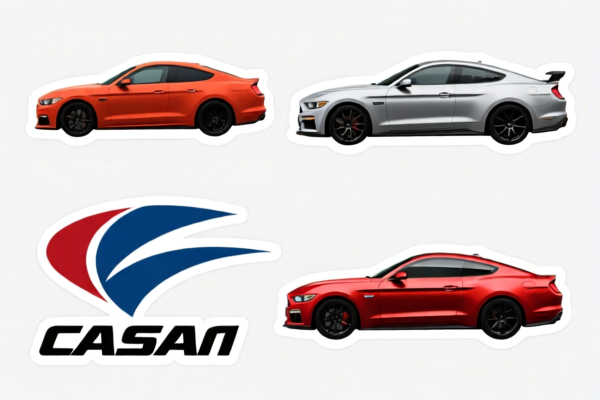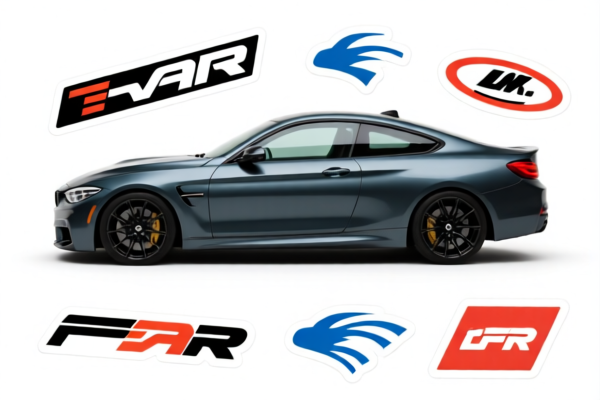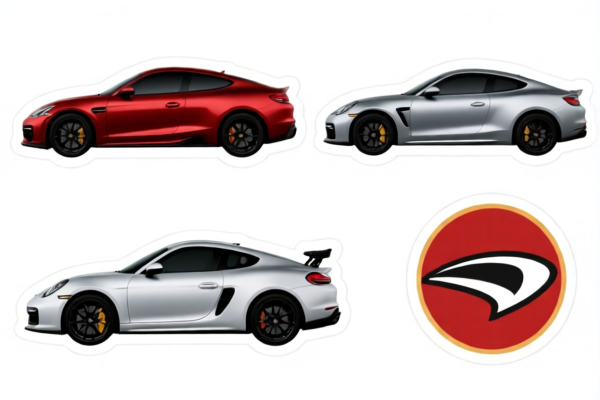| HS Code | Official Doc | Tariff Rate | Origin | Destination | Effective Date |
|---|---|---|---|---|---|
| 3919101010 | Doc | 61.5% | CN | US | 2025-05-12 |
| 3919901000 | Doc | 61.5% | CN | US | 2025-05-12 |
| 3926909925 | Doc | 42.8% | CN | US | 2025-05-12 |
| 3926904000 | Doc | 32.8% | CN | US | 2025-05-12 |
| 7009100000 | Doc | 58.9% | CN | US | 2025-05-12 |
| 7009100000 | Doc | 58.9% | CN | US | 2025-05-12 |
| 9620005000 | Doc | 60.3% | CN | US | 2025-05-12 |
| 9620006500 | Doc | 57.9% | CN | US | 2025-05-12 |
| 9617006000 | Doc | 37.2% | CN | US | 2025-05-12 |




Car Reflective Sticker
A car reflective sticker is a safety and visibility enhancement applied to the exterior of automobiles. These stickers utilize retroreflective materials to return a significant portion of light back to its source, making the vehicle more visible, particularly at night or in low-light conditions.
Material
The core component is the retroreflective sheeting itself. Common materials include:
- Acrylic: Offers good durability and weather resistance, commonly used for general-purpose reflective stickers.
- Prismatic: Utilizes microscopic prisms to reflect light, providing higher reflectivity than acrylic.
- Glass Bead: Incorporates small glass beads embedded in the sheeting to reflect light. Offers good reflectivity at a lower cost.
- High-Intensity Prismatic: Features more sophisticated prismatic structures for maximum reflectivity, often used in safety-critical applications.
- Engineering Grade: A mid-range option balancing cost and performance.
- Vinyl: The backing material, typically a durable, weather-resistant vinyl film.
Purpose
- Enhanced Visibility: The primary purpose is to increase the visibility of the vehicle to other drivers, cyclists, and pedestrians, especially during nighttime, dawn, dusk, or in adverse weather conditions (rain, fog, snow).
- Safety: Reduces the risk of accidents by making the vehicle more conspicuous.
- Aesthetic Customization: Available in a wide variety of colors, shapes, and designs, allowing for vehicle personalization.
- Compliance: Some regions or vehicle types (e.g., commercial vehicles, trucks) may legally require reflective markings for safety regulations.
Function
Reflective stickers function based on the principle of retroreflection. Light from headlights or other sources strikes the sticker and is reflected directly back towards the light source, rather than being scattered in other directions. This creates a bright, noticeable return signal, making the vehicle appear significantly brighter than it would otherwise. The efficiency of this reflection is measured by retroreflectivity, which dictates how much light is returned.
Usage Scenarios
- Commercial Vehicles: Trucks, buses, vans, and other commercial vehicles often utilize extensive reflective markings to comply with safety regulations and enhance visibility.
- Emergency Vehicles: Ambulances, fire trucks, and police cars use high-intensity reflective stickers for maximum visibility during emergency situations.
- Bicycles and Motorcycles: Applied to helmets, frames, and other parts of the vehicle for increased safety.
- Personal Vehicles: Used for aesthetic customization and to improve visibility in general driving conditions.
- Trailers and Heavy Equipment: Applied to trailers, construction equipment, and agricultural machinery for safety.
Common Types
- Reflective Tape: Continuous rolls of reflective material, often used for outlining vehicle shapes or creating custom patterns.
- Pre-Cut Stickers: Available in various shapes, sizes, and designs, offering easy application.
- Reflective Bumper Stickers: Specifically designed for application to vehicle bumpers.
- Reflective Wheel Stripe Stickers: Applied to the rims of wheels for a unique aesthetic and increased visibility.
- Reflective Door Edge Guards: Protect door edges while providing added reflectivity.
- Reflective Warning Signs: Used to indicate hazards or special conditions.
- DOT-C2 Reflective Tape: Compliant with Department of Transportation (DOT) specifications for commercial vehicles.
Car reflective stickers can be classified under several HS codes based on their composition and function, as detailed below:
- 3919101010: Self-adhesive plates, sheets, film, foil, tape, strip and other flat shapes, of plastics, whether or not in rolls: In rolls of a width not exceeding 20 cm: Having a light-reflecting surface produced in whole or in part by glass grains (ballotini) Pavement marking tape. This code applies to plastic-based reflective stickers, particularly those used for pavement marking and supplied in rolls with a width of 20 cm or less, utilizing glass beads for reflectivity. The total tax rate is 61.5% (Basic tariff: 6.5%, Additional tariff: 25.0%, Post-April 2, 2025, additional tariff: 30.0%).
- 3919901000: Self-adhesive plates, sheets, film, foil, tape, strip and other flat shapes, of plastics, whether or not in rolls: Other: Having a light-reflecting surface produced in whole or part by glass grains (ballotini). This code is for plastic-based reflective stickers not falling under 3919101010, but still utilizing glass beads for reflectivity. The total tax rate is 61.5% (Basic tariff: 6.5%, Additional tariff: 25.0%, Post-April 2, 2025, additional tariff: 30.0%).
- 7009100000: Glass mirrors, whether or not framed, including rear-view mirrors: Rear-view mirrors for vehicles. If the reflective sticker is integrated into a rear-view mirror for vehicles, this HS code applies. The total tax rate is 58.9% (Basic tariff: 3.9%, Additional tariff: 25.0%, Post-April 2, 2025, additional tariff: 30.0%).
Important Note: HS code 3919101010 and 3919901000 both relate to plastic-based reflective stickers. The distinction lies in whether the sticker is supplied in rolls of a width not exceeding 20 cm (3919101010) and the presence of glass beads for reflectivity.
Customer Reviews
No reviews yet.